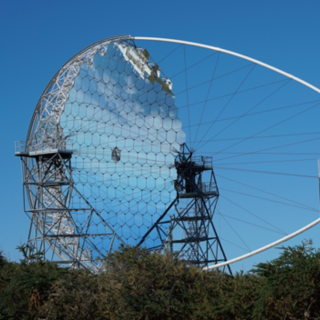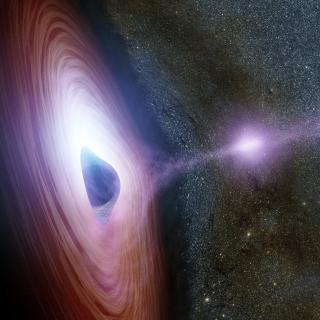Bibcode
MAGIC Collaboration; Acciari, V. A.; Ansoldi, S.; Antonelli, L. A.; Arbet Engels, A.; Babić, A.; Banerjee, B.; Barres de Almeida, U.; Barrio, J. A.; Bednarek, W.; Becerra González, J.; Bellizzi, L.; Bernardini, E.; Berti, A.; Besenrieder, J.; Bhattacharyya, W.; Bigongiari, C.; Blanch, O.; Bonnoli, G.; Bošnjak, Ž.; Busetto, G.; Carosi, R.; Ceribella, G.; Cerruti, M.; Chai, Y.; Chilingaryan, A.; Cikota, S.; Colak, S. M.; Colin, U.; Colombo, E.; Contreras, J. L.; Cortina, J.; Covino, S.; D'Elia, V.; da Vela, P.; Dazzi, F.; de Angelis, A.; de Lotto, B.; Delfino, M.; Delgado, J.; Depaoli, D.; di Pierro, F.; di Venere, L.; Do Souto Espiñeira, E.; Dominis Prester, D.; Donini, A.; Doro, M.; Elsaesser, D.; Fallah Ramazani, V.; Fattorini, A.; Ferrara, G.; Foffano, L.; Fonseca, M. V.; Font, L.; Fruck, C.; Fukami, S.; García López, R. J.; Garczarczyk, M.; Gasparyan, S.; Gaug, M.; Giglietto, N.; Giordano, F.; Godinović, N.; Gliwny, P.; Green, D.; Hadasch, D.; Hahn, A.; Herrera, J.(Instituto de Astrofísica de Canarias, E-38200 La Laguna, Tenerife, Spain) [Other]; Hoang, J.; Hrupec, D.; Hütten, M.; Inada, T.; Inoue, S.; Ishio, K.; Iwamura, Y.; Jouvin, L.; Kajiwara, Y.; Kerszberg, D.; Kobayashi, Y.; Kubo, H.; Kushida, J.; Lamastra, A.; Lelas, D.; Leone, F.; Lindfors, E.; Lombardi, S.; Longo, F.; López, M.; López-Coto, R.; López-Oramas, A.; Loporchio, S.; Machado de Oliveira Fraga, B.; Maggio, C.; Majumdar, P.; Makariev, M.; Mallamaci, M.; Maneva, G.; Manganaro, M.; Maraschi, L.; Mariotti, M. et al.
Bibliographical reference
Monthly Notices of the Royal Astronomical Society
Advertised on:
6
2020
Citations
22
Refereed citations
16
Description
Extreme high-frequency BL Lacs (EHBL) feature their synchrotron peak of the broad-band spectral energy distribution (SED) at νs ≥ 1017 Hz. The BL Lac object 1ES 2344+514 was included in the EHBL family because of its impressive shift of the synchrotron peak in 1996. During the following years, the source appeared to be in a low state without showing any extreme behaviours. In 2016 August, 1ES 2344+514 was detected with the ground-based γ-ray telescope FACT during a high γ-ray state, triggering multiwavelength (MWL) observations. We studied the MWL light curves of 1ES 2344+514 during the 2016 flaring state, using data from radio to very-high-energy (VHE) γ-rays taken with OVRO, KAIT, KVA, NOT, some telescopes of the GASP-WEBT collaboration at the Teide, Crimean, and St. Petersburg observatories, Swift-UVOT, Swift-XRT, Fermi-LAT, FACT, and MAGIC. With simultaneous observations of the flare, we built the broad-band SED and studied it in the framework of a leptonic and a hadronic model. The VHE γ-ray observations show a flux level of 55 per cent of the Crab Nebula flux above 300 GeV, similar to the historical maximum of 1995. The combination of MAGIC and Fermi-LAT spectra provides an unprecedented characterization of the inverse-Compton peak for this object during a flaring episode. The Γ index of the intrinsic spectrum in the VHE γ-ray band is 2.04 ± 0.12stat ± 0.15sys. We find the source in an extreme state with a shift of the position of the synchrotron peak to frequencies above or equal to 1018 Hz.
Related projects

Particle Astrophysics
The members of the Particle Astrophysics Group of the IAC participate actively in three large international collaborations of high-energy astrophysics: AMS-02 (Alpha Magnetic Spectrometer), the Cherenkov radiation telescopes MAGIC I and II and the Cherenkov Telescope Array Observatory ( CTAO). We also participate in the ASTRI mini-array, the gamma
Mónica Luisa
Vázquez Acosta

Variability in Active Galactic Nuclei: Multifrecuency Studies
Active Galactic Nuclei (AGN) are characterized by a strong emission coming from a very compact region (only few pcs) at the galaxy center. Blazars form a class of AGN, characterized by high luminosity in a broad frequency range, from radiofrequencies to high energies (X-rays and γ -rays), as well as extreme variability and high polarization at
José Antonio
Acosta Pulido